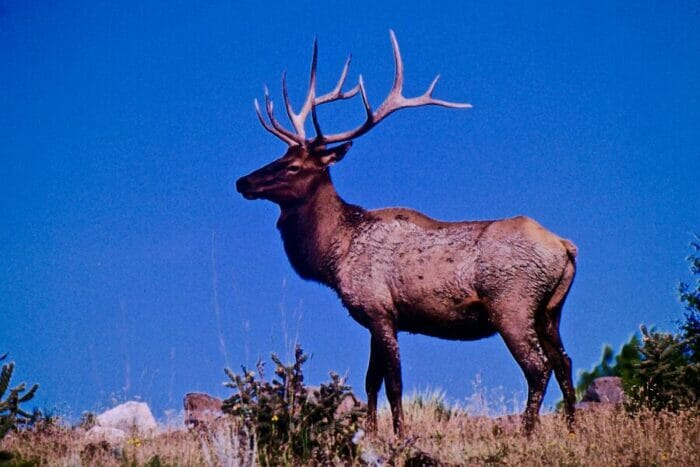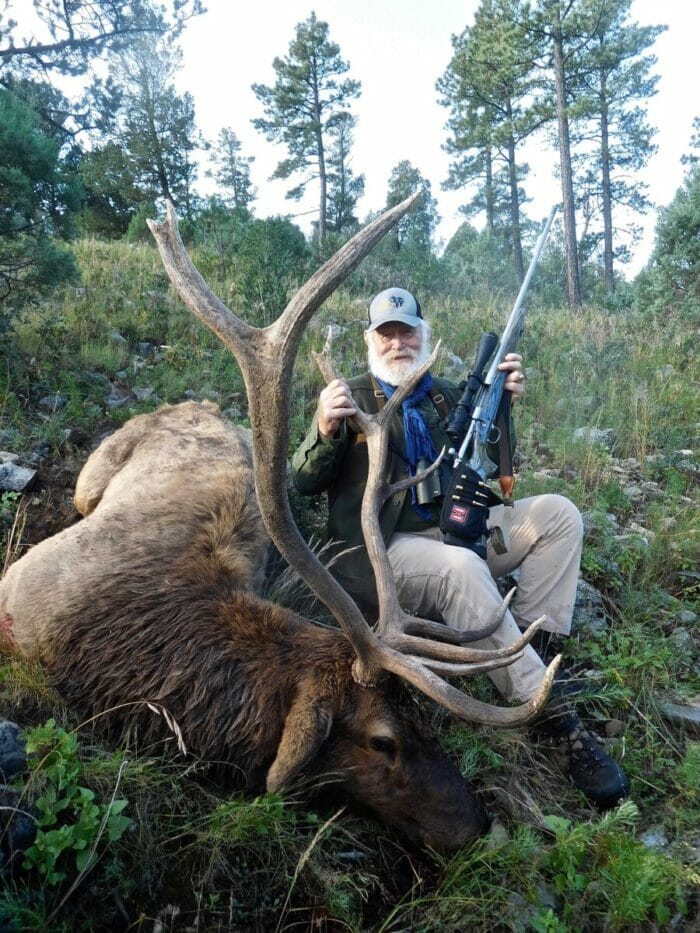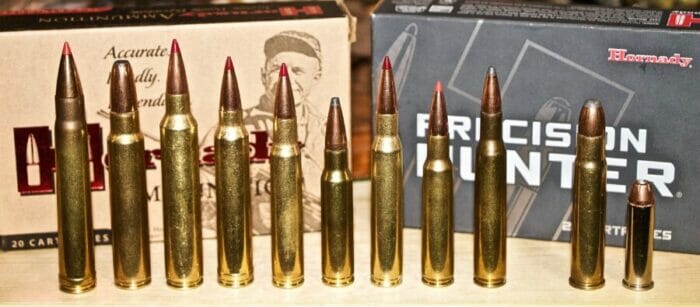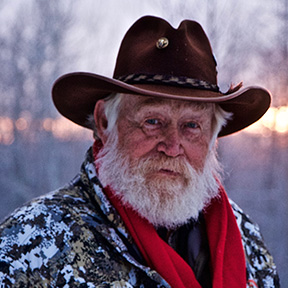Elk on the Horizon
“Kind of difficult thinking about elk hunting when it’s 106 outside!” stated my son-in-law Lance Tigrett. He had a point. Hopefully, by the time elk season rolled around, the northerly breezes will have turned considerably cooler. “But, it is time to do some serious planning. Josh, Justin, nor I drew an elk tag, so we’re going to bowhunt for elk in an unlimited license unit this year. May be an elk camping trip, but it’ll be fun nonetheless.” I knew he was right. I wished I could go with them, if for no other reason than to play camp cook. Unfortunately, the dates the three of them could all get away for a few days; I was scheduled to be on another hunt.
Elk Hunting Days
Elk hunting has changed considerably since I started hunting elk years ago. Back then, one simply bought an over-the-counter elk license and went hunting. Surely do miss those days.
A few years ago, I decided to no longer apply for limited draw tags, particularly when I learned I would likely have to live to be at least 100 before I stood a reasonable chance of drawing a tag in one of the limited units I really wanted to hunt. I do not think at that age I will be able to crawl the hills as I did before turning 70.
Does that mean I quit elk hunting? No sir! But it did mean I needed to find additional ways to make and save money to buy a landowner tag. Doing things this way means I get to hunt bull elk every four or five years and a cow most likely every year. If I depended on drawing a limited entry tag, it might mean not getting to ever hunt elk again.
Last year, 2021, through help from Russell Stacy, I was able to hunt a management bull on the famous Mescalero Apache Reservation in southern New Mexico. The hunt was fabulous. We were in elk, lots of bull elk every day. The only time we did not hear elk bugling was when driving with the windows rolled up and during the evening meal when we were in the interior of the Inn of the Mountain Gods. I had hunted elk numerous times in British Columbia, Canada, Colorado, New Mexico, and even Texas, where elk are considered exotics even though they once roamed there. Never had I heard so many different bulls bugling, day and night!
The bull I killed on the Mescalero Apache was bugled and cow-called to within less the 50-yards. I shot him with a Hornady 212-grain ELD-X Precision Hunter from my Remington Model 700 .300 Remington Ultra Mag. My Trijicon AccuPoint scope, with its center-point lit reticle, helped me pick up the charging in bull and helped me quickly get on target. A pretty good combination for an elk rifle. He was dead with my first shot, but I like to shoot, so I shot him a second time.
Elk Caliber Choice
This brings up the question of what is a good elk caliber and round. Going back to my first elk, an ancient 4×5 bull on the Jolly Ranch on the border between Colorado and Wyoming, and now part of the famed Three Forks Ranch, I used my .270 Winchester shooting a 130-grain soft-point Hornady load. The bull dropped in his tracks. I used that same Remington Model 700 on several other elk in Colorado and New Mexico.
Hunting in British Columbia for elk, I used the same .300 Remington Ultra Mag I hunted with most recently in New Mexico to take a truly huge bodied and beautifully antlered 6×6, back then the second animal take with the .300 RUM. After a very long and truly arduous stalk, I shot that bull at a grand distance of twelve steps! Hunting that same area, the Prophet-Muskwa, years later, I shot an old 6×5 bull with a .375 H&H using Hornady’s 270-grain Soft Points. That bull too, dropped in his tracks.
I have also shot elk with rifles chambered in .280 Remington, 7×57, .308 Win, .30-06, and .300 Win Mag. I used appropriate Hornady bullets, including hand loads and commercial loads. I hunted with elk on several occasions with a .50 caliber muzzleloader. I took a cow and bull using 150-grains of Hodgdon’s Pyrodex propelling 250-grain Hornady SST sabots. All did an excellent job, putting elk down quickly and humanely.
One of the other rifle rounds I have used is the .375 Ruger, shooting Hornady 300-grain DGX. With that combination, I was able to take a really nice 5×5 in north-central Colorado. Frankly, if I had but one rifle with which to hunt the world, it would be a .375 Ruger. I have hunted with this round throughout North America, Africa, Europe, and Australia. My primary rifle in that round was/is a Ruger Guide Rifle, topped with a Trijicon Accupoint and primarily shooting Hornady’s 300-gain DGX, even when I was hunting Alpine ibex in Austria. That particular Ruger loves that load!
Elk Hunting with Handguns
I have also hunted elk quite a bit with handguns, primarily with T/C Encores in .30-06 and .375 JDJ, and a Ruger revolver in .44 Mag. Hunting in southern Colorado years ago, I shot a great 7×7 one year, then two years later shot an equally great 6×7 at distances of 200 and 250 yards using my .30-06 T/C Encore with Hornady ammo. Two years later, I shot another nice 7×7 in Colorado with the same combination hunting with Tri-State Outfitters that bull at 300 yards. Later I shot a nice 6×5 on the Three Forks Ranch, that one taken a quarter of a mile away from where I shot my first bull elk. I shot the Three Forks bull with my .375 JDJ in an Encore using Hornady 270-grain Soft Point handload.
One of my highest scoring elk, in the 380s, was a 6×6 was taken in an area of Colorado not known for big antlered elk. We found him in a deep canyon. Try as we might, we could get no closer than 125-yards. I was hunting with my Ruger Super Blackhawk Hunter .44 Mag, shooting Hornady’s 240-grain XTP. After time at the shooting bench and on hunting trips, I knew the combination to be extremely accurate. From a solid rest, I could place all six shots into a 2-inch or less circle at 100 yards. “Can you take him for here?” questioned my guide. “No way to get closer!” I told him I felt confident taking the shot.
Using the fork of a tree as a rest, I cocked the hammer, settled the crosshairs immediately behind the bull’s shoulder, then pulled the trigger. The bull stood firm and did not move more than a mere flinch. Quickly I put three more rounds into him, trying to place the bullets at least 6-inches apart to create four large wound channels. I had the hammer cocked and was about to squeeze my fifth shot when the bull fell. With him down, I replaced the spent cases with fresh rounds in anticipation of walking toward him and being prepared if I needed to shoot him again. I did not have to. After taking photos and the like, I checked my shots. Two bullets remained in the elk; two had exited.
In anticipation of hunting elk again in 2023, I will be doing some hunting this fall with my next serious elk gun, a Taurus Raging Hunter revolver in .454 Casull, topped with a Trijicon RMR red dot sight, shooting Hornady’s 300-grain XTP loads. I plan on using this combination on several whitetail deer hunts this fall to gain confidence in my ability with it. I shot the combination briefly earlier this summer. At 100-yards was able to shoot less than 2-inch groups consistently.
It is never too early to start planning and preparing for your next or first elk hunt!
Professional wildlife biologist/outdoor communicator, Larry Weishuhn, known to many as “Mr. Whitetail”, has established quality wildlife management programs on over 12,000,000 acres throughout North American and other parts of the world. He has hunted big game with rifle and/or handgun on six continents. Larry is a Professional Member of the Boone & Crockett Club, life-member of numerous wildlife conservation organizations including the Dallas Safari Club, Mule Deer Foundation, and Wild Sheep Foundation. He currently serves on the DSC Foundation Board of Directors, is one of three co-founders of the Texas Wildlife Association; is a member of the Legends of the Outdoors Hall of Fame and the Muy Grande Hall of Fame; he too, received the Zeiss Lifetime Achievement Award among many other honors.





